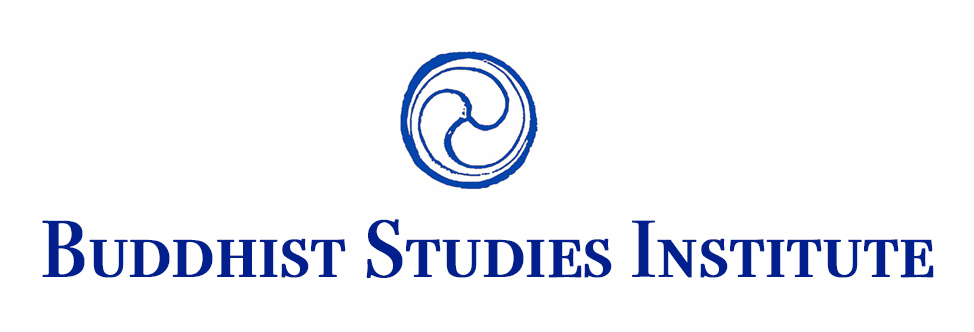Vajrayana Training 2.1.7-9 Samaya
VT 2.0 Module 1 Lesson 7 Empowerment
Continuing with the Text to be Studied
An Instruction Manual for The Great Perfection, Heart Essence of the Dakinis
- Tibetan Title: རྫོགས་པ་ཆེན་པོ་མཁའ་འགྲོ་སྙིང་ཐིག་གི་ཁྲིད་ཡིག་ཐར་ལམ་བགྲོད་བྱེད་ཤིང་རྟ་བཟང་པོ།
rDzogs pa chen po mkha’ ’gro snying thig gi khrid yig thar lam bgrod byed shing rta bzang po - Translation: The Excellent Chariot for the traveler on the path to liberation, the guide to the Dakinis Heart, the Great Perfection likit
- Sanskrit Title: Mokṣa panthaṁ gatiṣu ratho nāma mahāsaṁdhi dākinī cittatilakasya kṣiptalekha viharatisma
- Author: The Third Dzogchen Rinpoche, Ngeton Tenzin Zangpo
- Also known for short as: Dzogchen Ngeton Tenzin Zangpo’s The Excellent Chariot, Guide to the Dakini’s Heart
- Pema Khandro will call it for short: Guide to the Dakini’s Heart
- Today’s Passage is in the English translation page 14-15
Samaya
Passage from 14-15
There are many explanations concerning the vows one must maintain once empowerments have been received. These are summarized in the following passage from the Tantra of Penetrating Sound:
“There will never be enough time to explain all the details of the samaya vows involved in receiving empowerment, but in brief, one should maintain enlightened form, speech, and mind.”
This quotation shows what needs to be maintained once one has received empowerment. Without losing sight of the purpose of maintaining the vows, one should keep a restrained mind, along with its seed.
This can be classified in terms of the various main and subsidiary samaya vows, as well as the particular injunction not to stray from the samaya vows of enlightened form, speech, and mind.
In brief, however, the supreme samaya vow is when there is no restraint or vow, when the scores of things to be maintained and focused upon are understood to be unestablished and maintained from the very outset. On this point, it is said of this great, primordial lack of anything to maintain, that there is no dividing line to be sequentially established when it comes to keeping a vow, and also that to have conquered all such boundaries is the highest form of samaya.
Tibetan and English Translation by Pema Khandro
དེ་ལྟ་བུའི་དབང་ཐོབ་ཕྱིན་ཆད་དམ་ཚིག་གི་རྣམ་བཤད་ཀྱང་མང་དུ་ཡོད་ནའང་མདོར་བསྡུ་ན།་ཐལ་འགྱུར་ལས།
Likewise, once empowerments have been received, thereafter there are many explanations of vows [to maintain]. However, if we were to express it in brief, the Thalgyur says:
དབང་བརྟན་པ་ཡི་དམ་ཚིག་བཤད། བྱེ་བྲག་བརྗོད་ཀྱིས་མི་ལོང་ཡང།མདོར་བསྡུས་སྐུ་གསུང་ཐུགས་ཉིད་བསྲུང།
“There is not enough time to express in details the explanation of the vows which stabilize the empowerment. However in short, there is the body, speech and mind of awakening.
ཞེས་པའི་བསྲུང་བྱའི་དོན་ལས་མི་འདའ་བར་སྡོམ་པའི་སེམས་ས་བོན་དང་བཅས་པ་སྟེ།
The meaning of this quote is that one should not trangress the restraint of mind or its seed.
དབྱེ་ན་རྩ་བ་དང་ཡན་ལག་གི་དམ་ཚིག་ཇི་སྙེད་པ་རྣམས་དང་།ཁྱད་པར་སྐུ་གསུང་ཐུགས་ཀྱི་དམ་ཚིག་ལས་འདའ་བར་མི་སྤྱོད་པ་ཉིད་ཡིན་ཅིང།
For example, it is classified according to the root and branch vows. Especially, in order to attain the goal one should not waver from the [vows of] awakened body, speech and mind.
མདོར་ན་བསྲུང་བྱའི་གྲངས་དང་དམིགས་སུ་མ་གྲུབ་པ་ཡེ་བསྲུང་བཅིངས་སྡོམ་མེད་པ་ནི་དམ་ཚིག་གི་དམ་པ་སྟེ།
In brief, the number of observances and objects of focus are not established and are without being protected, bound or fastened from the beginning. That is the supreme vow.
།ཡེ་ནས་བསྲུང་མེད་ཆེན་པོ་ལ་།བསྲུང་མཚམས་རིམ་པར་བཀོད་པ་མེད།ཅེས་དང་བསྲུང་མཚམས་ཀུན་ལས་རྒྱལ་བ་ན།དམ་ཚིག་ཀུན་གྱི་རྩེ་མོར་བཤད།ཅེས་གསུངས་པ་བཞིན་ནོ།
From the beginning, the great vow is that which is without anything to defend, without being established in sequential boundaries of protection. And if all the boundaries to guard are already conquered, this is explained as the summit of all the vows.
Samaya aka Tantric Vows aka the Fourteen Vows
The Fourteen Fundamental Downfalls
The following acts incur the fourteen fundamental downfalls:
1) to denigrate the three spiritual masters
2) to Transgress the joyful buddhas’ commands
3) to be angry with the four kinds of siblings with whom your bond is indissoluble
4) To renounce loving-kindness
5) To relinquish the two kinds of awakened mind
6) To denigrate belief systems
7) To divulge secrets to those not spiritually mature
8) To disdain the five psychophysical aggregations
9) To doubt purity
10) To befriend the malicious
11) To analyze the doctrine conceptually
12) To upset the faithful
13) To not partake of the substances that satisfy the covenant
14) To not have contempt for any female embodiment of sublime insight
An alternate translation
Compiled and adapted from numerous texts by Pema Khandro Rinpoche
1. Disparaging the Lama. To avoid disrespecting, disturbing the Lama and the Lama’s retinue.
2. To avoid denigrating the Buddha’s teaching and the Lama’s teaching (This does not refer to unpacking and investigating Buddhism in constructive and respectful ways, this is referring to denigration and non-productive, disrespectful contestation).
3. Expressing contempt toward the Vajra family. To avoid being hostile to vajra brothers and sisters, to avoid causing or creating problems with one’s Vajra brothers and sisters. To never harbor animosity towards Vajrayana practitioners.
4. Abandoning Love. To avoid abandoning loving kindness on behalf of sentient beings.
5. Abandoning the two types of Bodhichitta. To never relinquish Bodhichitta due to difficulties. Avoid sexual misconduct.
6. Denigrating other religious philosophies and doctrines. To avoid denigrating the teachings and paths of others.
7. Revealing Secrets. To avoid revealing secrets to unprepared people. To never transmit Vajrayana teachings without proper empowerment and credentials, to never reveal Vajrayana teachings to those who are not ready to receive them.
8. Disrespecting the body. To avoid abusing and disrespecting the physical body, which are primordially pure, to avoid seeing the body and the world as ‘impure’ or ‘defiled.’
9. Doubting the dharma. To avoid developing doubt in the inner doctrines of the tantras (developing doubt refers to secretly harboring doubts without turning them into genuine questions put to the lama in the spirit of openness with a willingness to learn).
10. Improperly nourishing that which harms the dharma. To avoid idiot compassion, to never fail to act in a potentially disastrous situation. To avoid improperly applying acts of love.
11. Intellectualizing concepts as truth. To avoid Imposing anything upon reality (relating to non-duality as real). To remember the purpose of the path is presence of awareness.
12. Causing someone to lose faith. To avoid disparaging those who have faith (including Buddhists and all religions).
13. To rely on samaya substances. To fail to participate in Vajrayana rituals and rituals supports with ones Lama. Including songs, dances, substances, vajra and bell and so forth.
14. To never despise or condemn the other gender. To avoid disrespecting one’s partner.
Key Concepts:
Samaya (Tib. དམ་ཚིག; Wylie. dam tshig; Phonetic. damtsig)
Vajrayana commitments. These are the pledges taken by Vajrayana practitioners upon receiving initiation/empowerment. These include the first two types of vows, those of ‘individual liberation,’ which are monks vows or lay peoples vows (the five precepts) and the bodhisattva vows.The special Samaya, the vows of Vajrayana are the fourteen vows. Additionally they include vows of the five buddha families, root and branch vows. These vows are considered imperative codes of loyalty and view that are adhered to with great care, with the intensity with which one ‘guards the blood in one’s heart.’ Like all vows, they are impossible to keep perfectly unless one is already a buddha. Thus there are strategies to repair vows. However the quality of one’s practices and one’s mind-stream is thought to depend on how well these vows are kept. Like all vows, these are subject to interpretation. One should pay keen attention to how they are interpreted by one’s own Lama and sangha.
Homework
Read pages 14-15 in the English translation, “Great Perfection Outer and Inner Preliminaries.”
Points of Discussion for Vajrayana Live
- What are the vows of ‘individual liberation.’ Review these five precepts. Which are more difficult to keep and why? Give an example. Which is easiest for you to keep and why? Give an example of someone who has handled one of these vows in an exemplary manner.
- Review the first three vows. Discuss their meaning. Which is more difficult to keep and why? Give an example of someone who has handled one of these vows in an exemplary manner.


Leave a Reply
Want to join the discussion?Feel free to contribute!